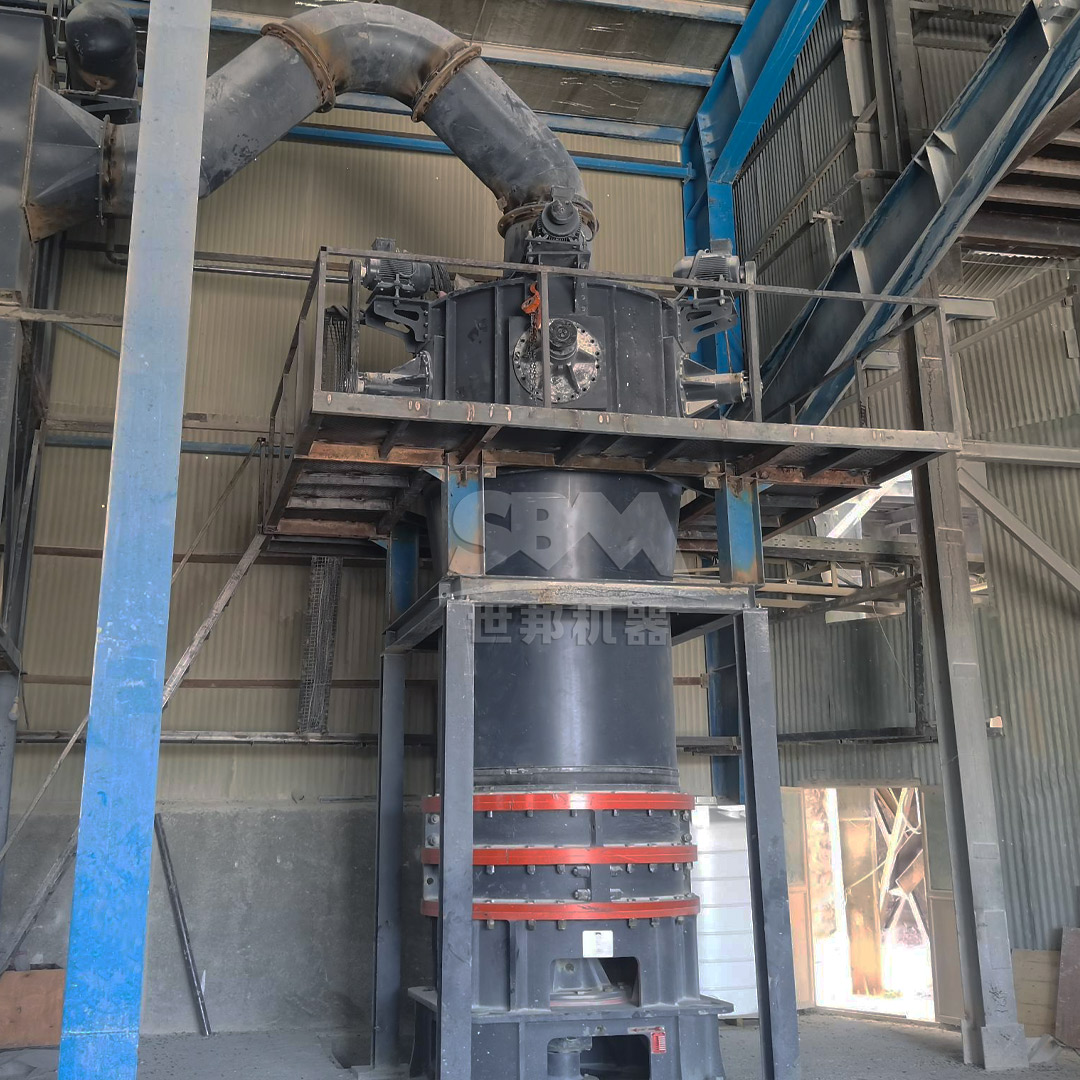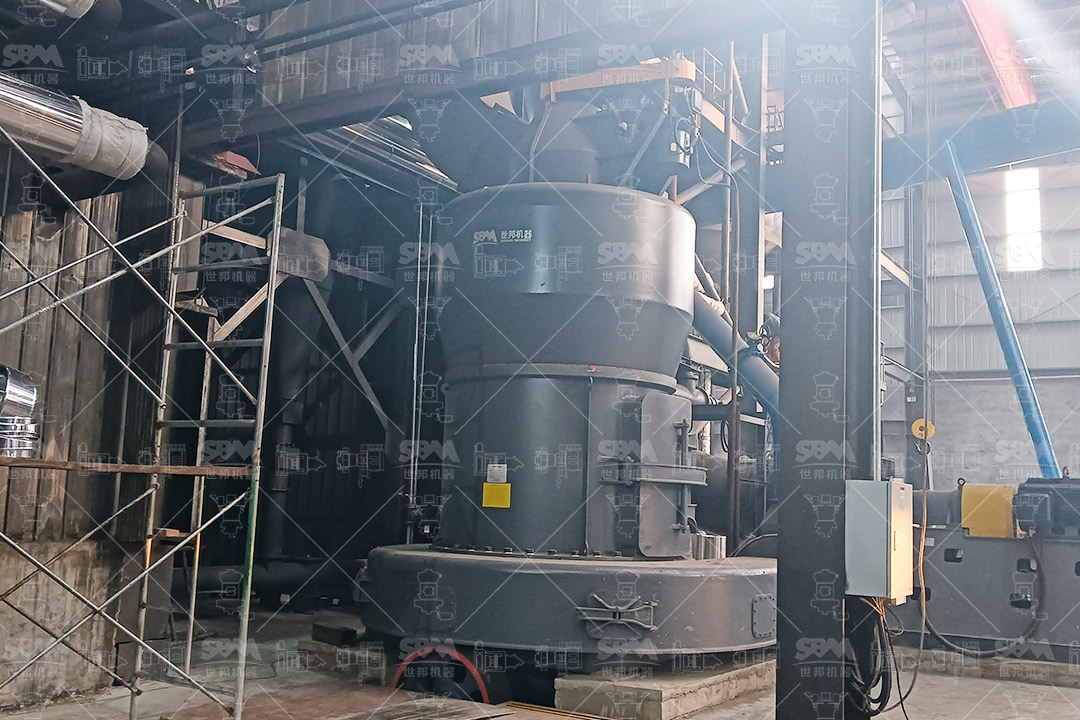Quartz, one of the most abundant minerals on Earth, possesses unique physical and chemical properties that make it challenging to grind efficiently. Its high hardness (7 on the Mohs scale), chemical inertness, and abrasive nature demand specialized milling equipment to achieve the desired fineness for applications in glass, ceramics, electronics, and construction industries. Roller mill technology has emerged as a superior solution, offering significant improvements in grinding efficiency, energy consumption, and product quality compared to traditional ball mills and other grinding systems.
Quartz grinding presents several technical challenges that conventional milling equipment struggles to address effectively. The mineral’s high silica content (over 90% SiO2) creates extreme abrasiveness that rapidly wears down grinding media and mill components. This abrasiveness leads to increased maintenance costs, contamination of the final product, and reduced equipment lifespan.
Additionally, quartz’s crystalline structure requires precise control over the grinding process to prevent over-grinding, which can create excessive fines and reduce the valuable particle size fractions needed for specific applications. The thermal sensitivity of quartz also poses challenges, as excessive heat generation during grinding can cause phase transformations and affect the material’s performance characteristics.
Traditional grinding methods often result in inefficient energy utilization, with only 1-2% of the input energy actually contributing to particle size reduction. The remainder is lost as heat, noise, and vibration. This inefficiency becomes particularly problematic in high-volume quartz processing operations where energy costs represent a significant portion of production expenses.
Roller mills address quartz grinding challenges through a fundamentally different approach to particle size reduction. Unlike impact-based systems that rely on random collisions, roller mills utilize controlled compression forces between grinding elements to achieve more efficient and predictable size reduction.
The core efficiency improvements stem from several key technological advantages:
| Efficiency Factor | Traditional Ball Mill | Modern Roller Mill | Improvement Percentage |
|---|---|---|---|
| Energy Consumption | High (25-35 kWh/t) | Low (15-22 kWh/t) | 30-40% Reduction |
| Wear Part Lifetime | Short (2-4 months) | Extended (8-12 months) | 200-300% Increase |
| Product Contamination | Significant | Minimal | 70-85% Reduction |
| Particle Size Control | Limited | Precise | D97 Accuracy ±2% |
The material bed compression principle employed by roller mills creates multiple points of contact between particles, distributing the grinding force more evenly and reducing the specific energy required for size reduction. This mechanism is particularly effective for brittle materials like quartz, which fracture more readily under compressive stress than under impact forces.

Modern roller mills incorporate several specialized features that optimize their performance for quartz grinding applications. The grinding elements are typically manufactured from high-chromium alloys or ceramic composites that provide exceptional wear resistance against quartz’s abrasive nature. Special surface profiling on rollers and grinding tables enhances material capture and improves grinding efficiency.
Integrated classification systems represent another critical advancement. High-efficiency dynamic classifiers allow real-time adjustment of product fineness without stopping the grinding process. This capability is essential for quartz applications that require precise control over particle size distribution, such as high-purity electronics grade silica or specialized glass formulations.
Thermal management systems address quartz’s sensitivity to heat, incorporating air cooling and temperature monitoring to maintain optimal grinding conditions. Advanced roller mills also feature automated control systems that continuously adjust operating parameters based on feed characteristics and product requirements, ensuring consistent performance despite variations in raw material quality.
For operations requiring ultra-fine quartz powders with exceptional purity and narrow particle size distribution, our SCM Ultrafine Mill represents the pinnacle of grinding technology. This advanced system achieves remarkable fineness levels of 325-2500 mesh (D97≤5μm) while maintaining quartz’s essential chemical and physical properties.
The SCM Ultrafine Mill incorporates several proprietary technologies that make it ideally suited for high-value quartz applications:
With capacity ranging from 0.5 to 25 tons per hour depending on model selection, the SCM series provides scalable solutions for operations of all sizes. The system’s energy efficiency is particularly noteworthy, consuming 30% less power than conventional jet mills while delivering twice the production capacity.

For large-scale quartz processing operations requiring high throughput with consistent quality, our MTW Series Trapezium Mill offers an optimal balance of capacity, efficiency, and reliability. This robust system handles feed sizes up to 50mm and produces quartz powders in the 30-325 mesh range (down to 0.038mm) at capacities from 3 to 45 tons per hour.
The MTW Series incorporates several engineering innovations that enhance its performance in demanding quartz grinding applications:
The mill’s advanced working principle ensures efficient quartz comminution through a combination of extrusion, grinding, and impact forces. Material enters through the center feed and is distributed evenly across the grinding track by specially designed shovels. Centrifugal force moves the quartz outward between the rollers and grinding ring, where controlled compression achieves optimal size reduction.
The efficiency advantages of roller mills become particularly evident when comparing their performance with traditional quartz grinding systems across multiple operational parameters:
| Performance Metric | Ball Mill | Raymond Mill | SCM Ultrafine Mill | MTW Trapezium Mill |
|---|---|---|---|---|
| Specific Energy (kWh/t) | 28-35 | 22-28 | 18-22 | 16-20 |
| Wear Rate (g/t quartz) | 120-180 | 80-120 | 40-60 | 50-70 |
| Noise Level (dB) | 95-105 | 85-95 | 70-75 | 75-80 |
| Footprint (m²/ton capacity) | 3.5-4.5 | 2.5-3.5 | 1.8-2.5 | 2.0-2.8 |
This comparative analysis demonstrates that modern roller mills consistently outperform traditional systems across all critical efficiency indicators. The energy savings alone typically justify the capital investment within 12-24 months of operation, with additional benefits coming from reduced maintenance requirements, improved product quality, and lower environmental impact.
Maximizing the efficiency benefits of roller mill technology requires proper system configuration and operational practices. Several key factors influence grinding performance when processing quartz:
Moisture Control: Quartz feed moisture should be maintained below 2% to prevent agglomeration and ensure efficient grinding. Integrated drying systems can be incorporated for higher moisture materials.
Feed Size Distribution: Consistent feed sizing improves grinding stability and product uniformity. Pre-crushing to the optimal input size for the specific roller mill model enhances overall system efficiency.
Classifier Adjustment: Proper configuration of the integrated classification system ensures target particle size distribution while minimizing energy-intensive over-grinding of already合格 product.
Wear Monitoring: Regular inspection and measurement of grinding components allow for predictive maintenance scheduling, preventing unplanned downtime and maintaining product quality.
Advanced roller mills incorporate automated systems that continuously monitor these parameters and make real-time adjustments to maintain optimal grinding conditions. This level of process control was previously unavailable with traditional grinding equipment and represents a significant advancement in quartz processing technology.

The efficiency improvements offered by modern roller mills extend beyond operational performance to encompass significant environmental and economic advantages. The substantial reduction in energy consumption directly translates to lower carbon emissions, with typical CO2 reductions of 25-35% compared to conventional grinding systems.
Advanced dust collection systems integrated into roller mill designs capture over 99.9% of particulate emissions, ensuring compliance with the most stringent environmental regulations. Noise reduction technologies create safer working environments, with sound levels typically below 80 dB—a significant improvement over traditional mills that often exceed 100 dB.
From an economic perspective, the combination of lower energy costs, reduced maintenance requirements, extended component life, and higher product quality creates a compelling business case for upgrading to roller mill technology. The return on investment typically ranges from 18-36 months, with ongoing operational savings providing substantial competitive advantages throughout the equipment’s service life.
The evolution of roller mill technology continues to address the specific challenges of quartz grinding. Emerging developments include advanced ceramic grinding elements with hardness characteristics better matched to quartz’s abrasiveness, potentially extending component life by an additional 50-100%.
Artificial intelligence and machine learning systems are being integrated into mill control platforms, enabling predictive adjustment of operational parameters based on real-time analysis of grinding performance. These smart systems can identify optimal settings for specific quartz varieties and automatically compensate for variations in feed material characteristics.
Hybrid grinding systems that combine roller mill efficiency with additional classification stages show promise for producing specialized quartz products with extremely narrow particle size distributions. These systems are particularly valuable for high-value applications in the electronics and solar industries where precise particle characteristics are critical to product performance.
Roller mill technology represents a quantum leap in quartz grinding efficiency, addressing the material’s unique challenges through advanced engineering and intelligent system design. The combination of energy efficiency, precise particle control, reduced maintenance requirements, and environmental benefits makes modern roller mills the clear choice for forward-thinking quartz processing operations.
Our SCM Ultrafine Mill and MTW Series Trapezium Mill incorporate the latest advancements in grinding technology, specifically optimized for the demanding requirements of quartz applications. Whether your operation requires ultra-fine powders for high-value applications or high-volume production of standard grades, these systems deliver unparalleled performance and operational economy.
As quartz continues to find new applications across diverse industries, the importance of efficient, controlled grinding technology will only increase. Roller mills provide the foundation for tomorrow’s quartz processing operations, combining technical excellence with sustainable operational practices to meet the evolving demands of global markets.